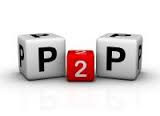Peer-to-peer lending? If it involves lending to friends and family … are you freakin’ serious! Nothing but horror stories.
P2P lending isn’t that. It’s lending to randoms. Via the internet. No emotion. The Terminator.
They don’t know who you are. You don’t know who they are. You can’t ban P2P borrowers from your next social gathering. Or threaten to kneecap them.
You can’t even get angry with anyone individually. When you loan money via P2P, your money is usually split over hundreds of loans.
A quick comparison of lending to P2P randoms, versus direct lending to mates.
P2P randoms pay you interest. No mate ever has. In the history of the world.
Most P2P borrowers will be good risks, checked by professional credit managers. Some won’t. But, in general, they repay a lot more reliably than family and friends.
A lending manager manages the repayments. No uncomfortable conversations with friends about when the money might coming back.
Borrowers via P2P need to pay you regularly, or run a risk of adverse credit reports. Mates work on the theory that you’ll eventually become uncomfortable asking for it, or sick of hearing “I’ll pay you back after next month’s pay, promise.”
P2P lending mangers claim the default rate is just a few per cent. What percentage of the debts to friends and family get written off?
It’s an industry in its infancy in Australia. It’s not a recommendation, but this could be one to watch, especially for those sick of seeing near 2.5 per cent returns on cash at the bank.
Bruce Brammall is the principal adviser with Bruce Brammall Financial (www.brucebrammall.com.au) and author of Mortgages Made Easy.
